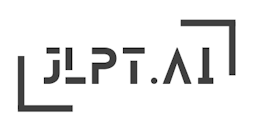

N3
音読み:zoku
訓読み:tsuzuku, tsuzukeru
ゾクzoku
つづ.くtsuzuku
つづ.けるtsuzukeru
Continue, sequel, follow
Imagine a continuation of lines flowing smoothly in a sequence, representing the concept of 'follow' or 'to continue'. The strokes of the kanji '続' symbolize the seamless transition from one element to the next.
The kanji '続' is included in the N3 level of the JLPT. It appears in vocabulary, reading comprehension, and kanji recognition sections of the exam. Familiarity with this kanji will enhance your understanding of various texts at the intermediate level.
彼の話は続いています。
His story is continuing.
かれのはなしはつづいています。
kare no hanashi wa tsuzuiteimasu.
映画の続きを見ましょう。
Let's watch the sequel of the movie.
えいがのつづきをみましょう。
eiga no tsudzuki o mimashou.
彼女の考え方に続けて賛成します。
I agree in continuation with her way of thinking.
かのじょのかんがえかたにつづけてさんせいします。
kanojo no kangaekata ni tsuzukete sansei shimasu.